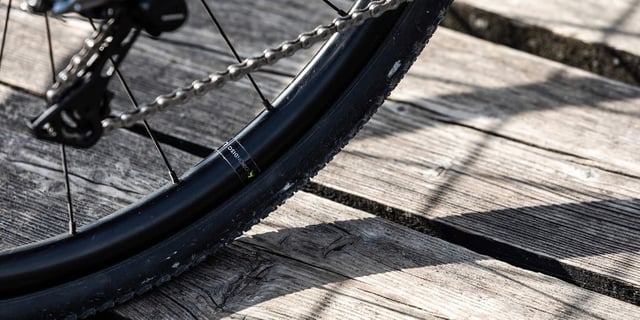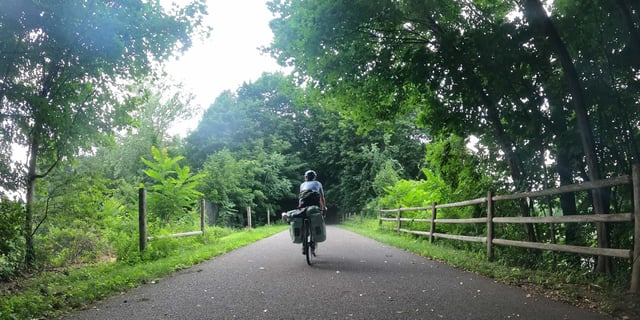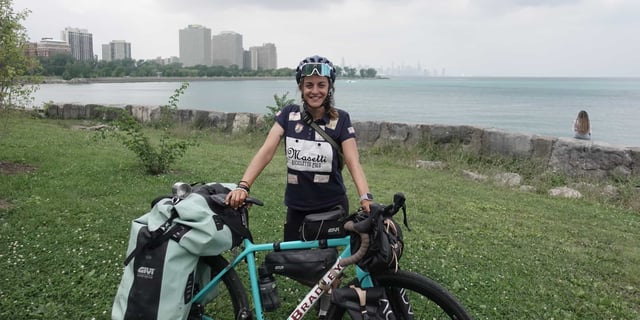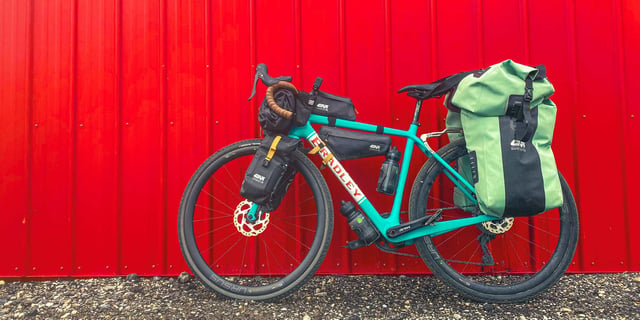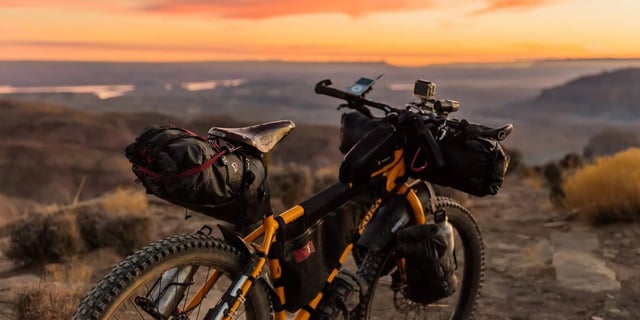
Mountain biking in the mountains or off-road, in mud or sand. The wildest routes become accessible and a holiday becomes a real two-wheeled adventure.
Although the most common bikes for cycle touring are gravel and trekking bikes, if you're planning an off-road trip, a MTB can make it even more exciting, because you'll be able to go anywhere.
Just make sure you have the appropriate equipment and accessories to make your journey comfortable.
Is my MTB suitable for cycle tourism?
A mountain bike can transform your way of travelling. Cycle touring is spreading fast but, as we mentioned, there's a tendency to use gravel, trekking or road bikes. The reasons are clear: comfort, luggage rack, a comfortable saddle. These are good choices for long routes without too many ups and downs or steep inclines.
However, if you decide to kit out your mountain bike for travelling, you'll discover a whole new world of cycle touring. An MTB allows you to move freely on uneven terrain, and you're not restricted to roads or cycleways.
Pebbles, forests, single-track roads and grass: it doesn't matter whether you decide to cycle the Tabernas desert in Andalusia, the mountains of the Alps or the great American parks. With your MTB you can move on both asphalt roads and technical terrains.
Will it be uncomfortable? Not if you choose the right accessories and equipment (we're coming to that).
Pros and cons of travelling on a mountain bike
There are good reasons why many people prefer gravel, trekking or road bikes for travel:
- they're lighter (with the same construction materials);
- with no suspension, they need less maintenance;
- on the flat they need less pedal power and there's less resistance to wheel movement;
- they usually have the option of adding a luggage rack.
However, even if you lose something in terms of comfort, an MTB offers a series of advantages for cycle touring compared to a road or trekking bike:
- the bike is more robust and resistant;
- the riding position is more upright;
- it's less tiring to pedal uphill;
- you have more control over braking;
- the bike is more comfortable thanks to the suspension.
However, as we said, with the right kit and accessories, you can adapt your MTB for an adventure. It all depends what kind of journey you have in mind.
5 tips for your mountain bike journey
- Choose routes suitable for MTB
Travelling by bike means pedalling for many kilometres on a range of terrains. If you've decided to go on an adventure, we recommend choosing routes that fit into your travel plans.
For the journey you'll need to adjust the wheels slightly and carry some luggage. Carefully choose MTB routes that are feasible even with these adjustments. Online you'll find plenty of MTB itineraries with downloadable GPS maps and a wealth of detail about the terrain, the incline, climbs and descents etc.
Another option is to travel by car and take your MTB with you, to use only for specific excursions. This solution is definitely less convenient, and detracts slightly from the adventure.
If you prefer to cycle on long, flat dirt roads with no particular elevation gain, consider taking a gravel bike for guaranteed comfort. - Bikepacking: which parts of the bike to use, and how
One limitation of MTBs for cycle touring is that they usually don't have fittings for a luggage rack. But you can do bikepacking, with special bags that can be attached to strategic points on your bike.
In fact, you can use:
- saddlebags. For this, we recommend using front suspension, unless you plan to cover particularly difficult terrain where you might need full suspension, especially on the rear wheel. If this is the case, check that your saddlebag is the correct size and doesn't impede the movement of the rear wheel;
- frame bags, which hook onto the MTB tubing;
- handlebar bags (but check first whether the disc brake tubes allow them to be mounted correctly);
- hydration backpack.
These items are made in waterproof fabrics. They come in various sizes, allowing you to organise your luggage, depending on the length of your journey.
The golden rule is: travel light, and carry only the essentials. - Mountain bike accessories you should always carry
Regarding clothing, carry a couple of changes of technical garments, underwear and perhaps clothes for going out in town at night, to enjoy a well-deserved meal in a local restaurant. Don't take too many clothes: instead, carry a bar of laundry soap so you can wash items and always have clean clothing. If you're planning to sleep in a tent, choose a compact one you can transport as easily as possible in a handlebar bag.
The really important things to carry are:
- water and energy bars;
- cash and documents;
- MTB repair kit;
- helmet.
Don't set out without checking you have all these! - TTips for preparing the wheels
Your choice of wheels for your MTB journey is very important. The first tip - which is fairly obvious - is to choose tubeless to reduce the risk of cuts and punctures, but also because they cope better with a wide range of terrains.
Obviously, we also advise using wheels that are compatible with disc brakes.
As for the tyres, it depends on the type of journey you're planning. If you don't need a deep tread, which produces a lot of friction (useful for very tough sections, for example), we recommend choosing tyres with a shallower but tighter tread. It's a more versatile solution for travelling.
If possible, choose a compound that's tough and hardwearing.
Before departing, don't forget to check these important factors:
- spoke tension;
- the condition of the hubs and especially the ball bearings inside them;
- the condition of the brake pads. - Final touches: the saddle and the handlebar stem
Your MTB is ready for the journey, but you can still make some last-minute adjustments to make it more comfortable.
The first is the saddle. Mountain bike saddles are comfortable by nature, as they have good suspension and are made in materials that help to absorb shocks. But they have a particular forward slope, which allows you to pedal standing up on difficult sections. Although this works well in competitions, it may be uncomfortable on a long journey.
You can optimise your position by using a rigid seat post to find a position that's more comfortable and/or replacing the MTB saddle with one designed for cycle touring.
The other comfort-related tip regards the handlebar stem. In general the position on a MTB is more upright that on a road bike, but some riders prefer a more aggressive setup to increase the speed of descents, for example in endurance races.
If that's you, we recommend adjusting the setup for your trip.
If you use a handlebar stem with an adjustable angle, like the Ursus Magnus S700, your riding position will be optimal for your body size when riding your MTB.
